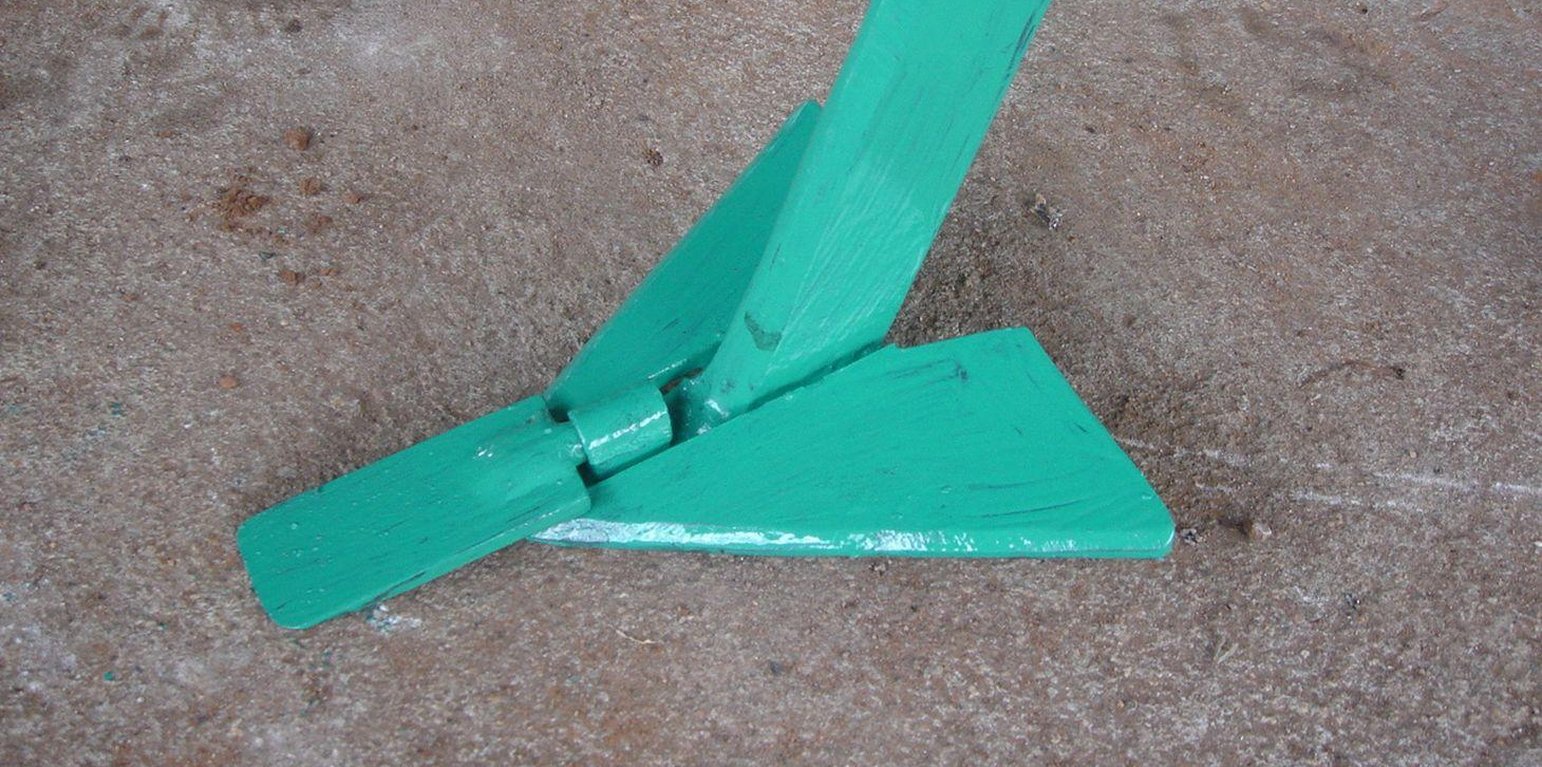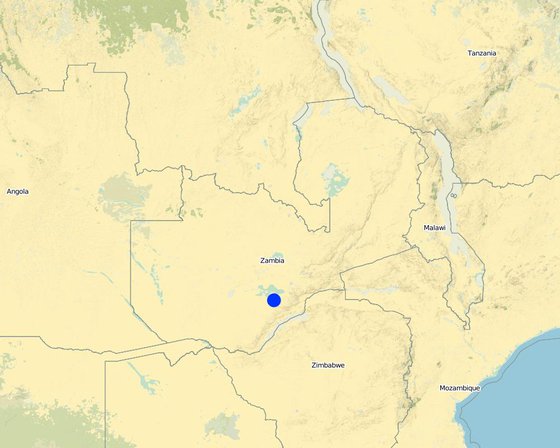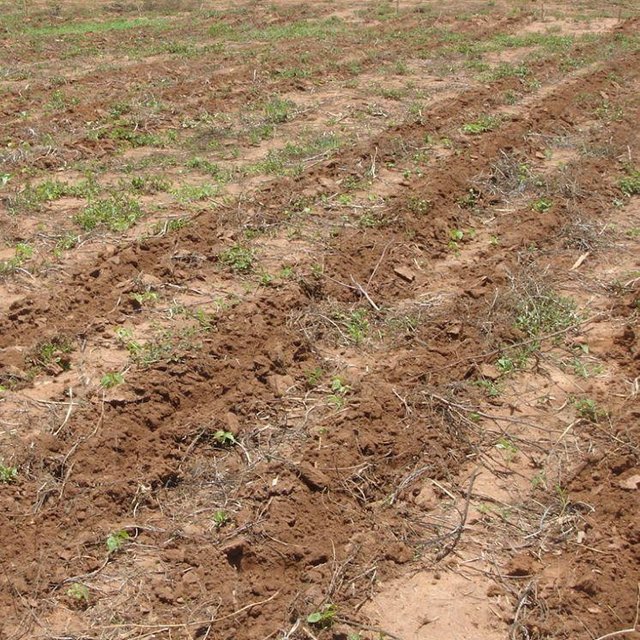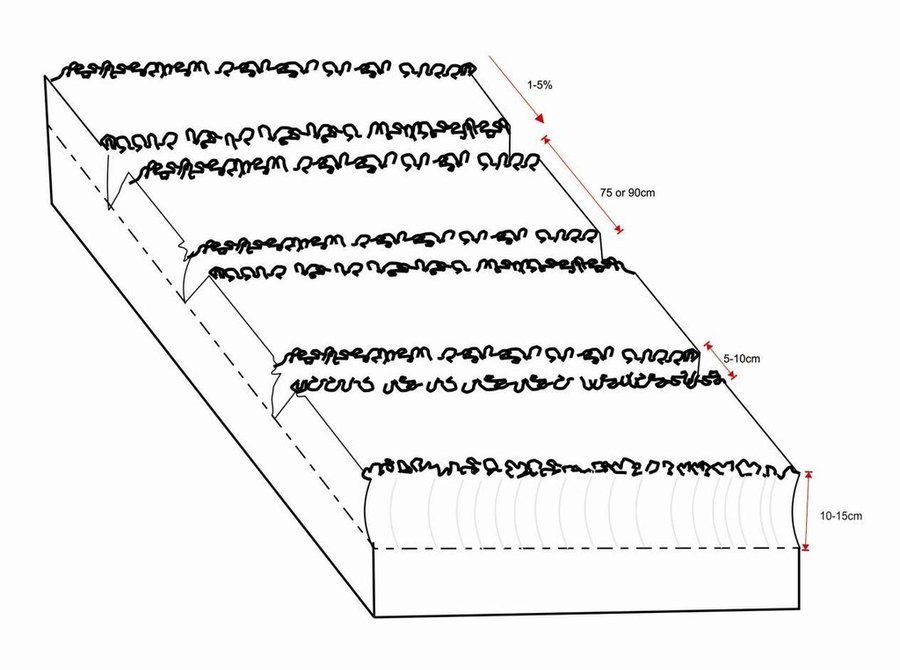



The strip tillage tool is an adaptation of a Magoye Ripper but is meant to be used in moist soil. In the strip tillage tool, sub-surface wings are attached to the ripper tine to increase the width of soil disruption which the ripper will be unable to achieve in moist soil. The sub-surface wings loosen the soil by lifting it slightly and letting it fall in place without inverting it. In this way, a strip of soil with a width of around 20cm is tilled up to 20cm deep and this is where the crop will be planted. The region between the strips is maintained as a no-till region for soil and water conservation.
Purpose of the Technology: The strip tillage tool is meant to be a transitional technology for farmers intending to adopt Conservation Agriculture (CA) in degraded soils. These soils will need routine loosening while the biological activities allow the soil structure to recover sufficiently until tillage is no longer required. Strip tillage is able to achieve deeper soil loosening with much less draft force, wear of tines and soil disturbance than ripping. The untilled region between the strips enables the benefits of soil cover such as improved infiltration, soil water storage and increased soil organic matter. Soil loosening by strip tillage does not produce large clods like ripping does but instead produces a fine seedbed that enables uniform emergence of the crop, and this together with the deep penetration results in early plant vigour. The strip tillage implement is also designed to allow the attachment of a planter unit to enable tillage and planting in one operation.
Establishment / maintenance activities and inputs: The establishment of strip tillage based conservation agriculture mainly involves the purchase of the strip tillage implement and the replaceable tines. Liming acidic soils (low pH soils) followed by a final ploughing will be required to correct the soil PH which otherwise will be difficult to correct once conservation tillage has been established. Maintenance activities include strip-tilling the soil which may or may not include planting and fertilizing in the same operation. Weeding should preferably include the use of herbicides, implying that the major operations will include spraying. In addition to the normal conventional inputs, herbicides will also become a major input and cost.
Natural / human environment: The strip tillage technology is most suited to the bigger small-scale farmers with a capacity of 5ha to about 20ha. The strip tillage tool together with the planter will require a relatively substantial investment and only the bigger farmers will fully utilize its capacity. The strip tillage action will not be very effective in wet soils especially in the heavier soils, soil disruption is best achieved when the soil is slightly moist but not too dry as to require to high draft forces. Strip tillage is useful in soil with poor structure that will require routine loosening to maintain yields while the soil is being rehabilitated.

地点: Mazabuka/Magoye, Zambia/Southern Province, 赞比亚
分析的技术场所数量:
技术传播: 均匀地分布在一个区域 (approx. 0.1-1 平方千米)
在永久保护区?:
实施日期: 不到10年前(最近)
介绍类型









| 对投入进行具体说明 | 单位 | 数量 | 单位成本 (美元) | 每项投入的总成本 (美元) | 土地使用者承担的成本% |
| 设备 | |||||
| Strip Tillage implement | pieces | 1.0 | 500.0 | 500.0 | 100.0 |
| Knapsack Sprayer | pieces | 1.0 | 80.0 | 80.0 | 100.0 |
| 技术建立所需总成本 | 580.0 | ||||
| 技术建立总成本,美元 | 580.0 | ||||
| 对投入进行具体说明 | 单位 | 数量 | 单位成本 (美元) | 每项投入的总成本 (美元) | 土地使用者承担的成本% |
| 劳动力 | |||||
| Slashing and spreading crop residues | persons/day/ha | 8.0 | 2.5 | 20.0 | 100.0 |
| Liming soil | persons/day/ha | 2.0 | 2.5 | 5.0 | 100.0 |
| Strip tillage, planting and fertilizing | persons/day/ha | 4.0 | 2.5 | 10.0 | 100.0 |
| Chemical weeding (sprayers) | persons/day/ha | 24.0 | 1.0 | 24.0 | 100.0 |
| 设备 | |||||
| Animal traction | ha | 1.0 | 40.0 | 40.0 | 100.0 |
| 植物材料 | |||||
| Seeds | kg/ha | 20.0 | 2.5 | 50.0 | 100.0 |
| 肥料和杀菌剂 | |||||
| Fertilizer | kg/ha | 400.0 | 0.8 | 320.0 | 100.0 |
| Herbicides | l/ha | 5.0 | 6.0 | 30.0 | 100.0 |
| 施工材料 | |||||
| Lime | kg | 1000.0 | 0.042 | 42.0 | 100.0 |
| 其它 | |||||
| Labour: Chemical weeding (sprayers) | persons/day/ha | 10.0 | 4.0 | 40.0 | 100.0 |
| Labour: Harvesting | persons/day/ha | 10.0 | 4.0 | 40.0 | 100.0 |
| 技术维护所需总成本 | 621.0 | ||||
| 技术维护总成本,美元 | 621.0 | ||||
SLM之前的数量: 3tons/ha
SLM之后的数量: 5tons/ha
Due to early planting
Residues needed for soil cover
Better resistance
SLM之前的数量: 2-3ha
SLM之后的数量: >10ha
Due to increased production area and improved yield
More time and labour freed for other activities
Due to mechanised planting and herbicide use
Due to incresed yields
Improved nutrition due to crop diversification
Less time spent on farm operations
Farmers trained through cooperatives
Due to incresed soil Carbon, crop residues to reduce run off, and capacity building
Due to competition with neighbours cattle for crop residues
The technology was only introduced recently and not yet widely adopted to make an impact. However the few farmers that have adopted have been able to multiply their production capacities and incomes.
Due to better soil cover
Due to better soil cover
Improved soil structure
Due to good drainage
Due to better soil cover
Due to better soil cover
Due to non-inversion tillage
Due to minimum soil disturbance, soil cover
Due to minimum soil disturbance, soil cover
Due to deep tillage
Due to minimum soil disturbance, soil cover
Due to good drainage
Due to minimum soil disturbance, soil cover
Due to minimum soil disturbance, soil cover
Due to soil organic matter (SOM) buildup
Resistance to chemical weed control
Due to Carbon (C) sequestration
Some chemicals get carried down the profile
Only if applied over an extensive area
Only if applied over an extensive area
Only if applied over an extensive area
Only if applied over an extensive area